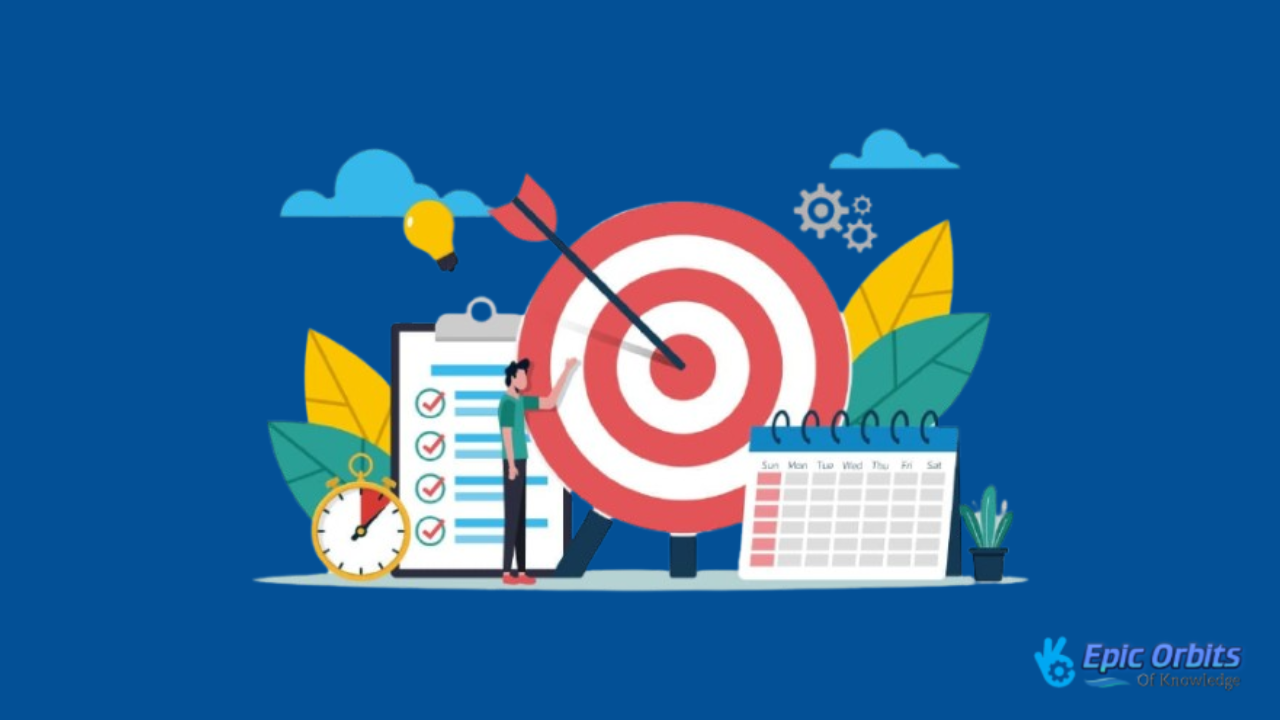How to Create Engaging and Original Content
Discover the art of crafting engaging content. Learn the essentials of creating original and captivating material in this comprehensive glossary.

Content that engages viewers is at the heart of communication in today’s digital age. While only a small percentage of marketing messages create a lasting impact, the average person is exposed to more than 5,000 messages every day.
Making captivating and unique material calls on both art and science; it depends on a strong sense of what meaning the audience will find and a thorough awareness of human psychology.
Writing a memorable message involves providing meaningful content rather than simply presenting a phrase or concept.
Deciphering the Core of Content
Understanding the fundamentals of content is crucial because it forms the majority of modern communication. Content is everywhere on the digital terrain of today, molding our impressions, guiding our choices, and amusing us.
Content, as used in text, photos, or videos, is the substance or content offered to an audience across many media. From entertainment to instructional information, the shape and topic of this material might vary widely.
Content exists across multiple dimensions—its subject matter, informational value, and the environment in which it’s delivered. For instance, a blog post on a particular topic can be presented in various formats, such as a written article or a video, each offering a unique experience to the audience.
The informational value of content refers to its usefulness and relevance, as seen in educational blogs or how-to guides that help readers learn or solve problems. The emotional impact relates to the feelings a piece of content evokes, such as through storytelling or inspirational videos that connect with audiences on a personal level. Meanwhile, aesthetic qualities describe the visual and auditory appeal of the content—infographics, striking visuals, or high-quality sound can enhance engagement and retention.
To create truly compelling content, one must understand the nuances of human psychology. Effective material doesn’t just convey information—it fulfills an emotional need, leaving the audience feeling engaged, satisfied, and inspired.
Well-written material may, as the term “to your heart’s content” implies, provide the reader a great feeling of gratification and connect on a personal level.
Many important components can capture a reader’s interest and enhance the overall value of the material. These include social evidence, authority signals, and scarcity cues, which may inspire action; they also involve narrative, which stimulates more brain areas than just facts.
Incorporating these components helps content producers create memorable and not merely captivating works.
Development of content depends on an awareness of psychological triggers. Cognitive comfort, which renders material digestible without dumbing it down, is one trigger that may boost persuasive power.
Moreover, maintaining a balance between conflict and resolution keeps viewers engaged throughout the entire experience. As shown as
“The best stories are those that balance the two and keep the reader interested in the result.”
Originality: The Content’s Holy Grail
Content producers strive for originality to set their work apart in the crowded digital landscape. Real uniqueness is about providing a fresh viewpoint or insight that fascinates the audience, not just new knowledge.
Truly original content is defined by its ability to offer new ideas or perspectives on a subject. This can be achieved by juxtaposing seemingly unrelated concepts or by presenting familiar information in a creative and engaging way. Tools like analogies and metaphors can be especially effective in simplifying complex topics and making them more appealing to readers.
Original content often demonstrates a unique perspective, such as presenting a contrarian view on a widely discussed topic. It can also provide fresh insights, like analyzing current trends to forecast future developments in an industry. Additionally, a novel presentation—for instance, using storytelling techniques to communicate complex data—can make the content stand out and resonate with audiences.
Relying too heavily on familiar patterns or industry clichés can make content feel derivative and uninspired. To avoid this, creators should experiment with different formats, tones, and structures. Equally important is recognizing the “curse of knowledge,” where deep understanding of a subject can unintentionally lead to oversimplification or the omission of valuable context.
Creators may break out of creative ruts and generate work that really connects with their audience by recognizing these dangers and aggressively attempting to create original and meaningful material.
Content Types and Their Special Engagement Attributes
Our consumption of knowledge has changed, as well as the kinds of materials that grab our interest. Creating captivating experiences depends on being aware of the many content forms.
- Written Content: Articles, Blogs, and Beyond: Still the pillar of digital communication, written material provides in-depth study and perspectives on many topics. Prime examples are articles and blogs, which provide people a stage to interact with their readers and offer their knowledge.
- Visual Content: Images, Infographics, and Videos: Another great technique is visual material, which may quickly and in an easily consumable way provide complicated knowledge. Images, infographics, and videos are excellent examples of how visual features can grab a person’s attention and improve interaction with the material.
- Interactive Content: Quizzes, Polls, and Tools: Interactive materials inspire active involvement rather than passive reading. Incorporating quizzes, polls, and tools that provide individualized experiences can help authors inspire someone to act, therefore enhancing the memorable and powerful nature of the work. For example, a quiz may be an engaging way to appreciate the audience and make the material more relevant to them.
Different types of content engage audiences in unique ways, depending on how they deliver information and stimulate interaction.
Written content offers in-depth analysis and is ideal for conveying detailed insights, such as through blog posts or long-form articles. Visual content captures attention through its aesthetic appeal—infographics, for instance, simplify complex data and make it more digestible. Interactive content provides a personalized experience, engaging users directly through elements like quizzes, polls, or interactive tools that invite participation and feedback.
The five best practices of a content creation strategy
Using best practices helps you create a successful plan so you may maximize the time, money, and effort you invest in the process.
Thus, let’s review some of these strategies right away and see how they could advance the production of your work.
1. Clearly state your objectives

Like everything else in life, success is difficult to gauge unless you first know your initial goals.
This is why it’s crucial to know precisely the intended use of your material.
Perhaps you want to raise brand recognition or the monthly lead count for your business. Alternatively, you can choose to increase general income and conversion rates.
Once you know what you want to achieve, it’s time to become a little more precise about your aims for content development.
Would you want to have a one hundred percent increase in newsletter subscribers? If so, what is your target date for achieving this goal? Are you trying to attract more unique visitors to your website each month? That’s wonderful! Please specify the exact number.
2. View the Rivals

We understand. Determining the boundary between overly optimistic and excessively ambitious objectives could be one of the most challenging aspects of defining content development goals.
Starting with competition benchmarks helps you keep things reasonable. What is their traffic load? How does it measure against your own?
Which keywords and techniques are they applying that could clarify their success?
If your next query is along the lines of “How am I supposed to know?” please feel at ease. Semrush, among other tools, allows you to obtain this data with a single button click.
3. Review Your Material for Audit

Knowing your competitors’ stats is useful, but only if you can compare them to yours.
This is why evaluating the quality of your present material is really vital. Using Google Analytics for performance monitoring will help you keep track of the page views and returning visitor count your work produces.
It may also show the typical number of pages your readers go through each session and the average time they spend with you.
The format of the content in question will dictate the metrics you use. However, the key point is that content production heavily relies on identifying what isn’t working.
This may reveal the best areas to focus on and suggest whether it is time for a little spring cleaning.
4. Be Aware of Your Audience

Would you like to learn one of the most important secrets of content creation? It has nothing to do with you or even the item or service you are presenting.
The secret to creating the greatest material is realizing that it revolves around your consumer, their issues, and how you can assist in their resolution.
Knowing this basic reality could assist one in distinguishing between seeming like a used vehicle salesperson and a buddy with great advice.
It’s easy to think that everyone with internet access is a perfect consumer, but that’s not true.
You will be able to relate to your particular target audience in the most relevant manner only after you fully grasp the issues they require assistance with.
5. Clarifying SEO Optimization

It’s time to map your optimization strategy now that you have your objectives, researched the strategies of your rivals, and determined your target audience.
Review SEO keywords and phrases most effective for your rivals and choose one or two to concentrate on.
Remember that individuals should not lose their sanity in this situation. Far too many digital marketers have claimed to be victims of this frequent content development pitfall.
Many foolish marketers will try to enhance their Google results by stuffing every single relevant SEO term into their material as many times as possible.
Google itself has made it obvious that this does not function and may even cause damage. Using keywords, phrases, and ideas organically will help you to approach your issue in the most comprehensive manner.
Is Using AI for Content Creation a Good Decision?
AI is developing in 2024 at a speed never witnessed in the past. Programs like ChatGPT and Jarvis simplify the process by which companies and people quickly produce material.
Though it appears a new artificial intelligence platform is released every day, there are certain restrictions and things to take into account when employing these programs. Let us dissect them here.
1. False information
Artificial intelligence software’s ability to “hallucinate” is one of its most intriguing oddities. The application sends out either very inaccurate or flat-out erroneous information when the event occurs.
The fact is that artificial intelligence isn’t technically “learning” knowledge. Rather, it looks for material connected to the inquiry and then creates its response depending on that material.
Sadly, AI searches the internet for data from unreliable or deceptive sources, therefore influencing the outcomes.
Regarding something like ChatGPT, the current knowledge pool might also be small. ChatGPT’s data is only up to 2021, so it can’t use new information in its answers.
You should fact-check any AI-generated material generally. Even if your work lacks technical fact-based accuracy, it is still smart to verify that the response is based on accurate concepts.
Remember that this issue will only become worse as more websites post artificial intelligence information without checking its accuracy. Programs will devour the same knowledge, creating a circular logic issue that could become difficult to sort out.
2. Fashion
It’s easy to tell AI writing from human writing. Even initiatives claiming “human-like language” have several notable constraints.
Once again, the problem is that the software is gathering and preserving knowledge rather than learning.
Many materials related to artificial intelligence are basic and repetitious. Should an English instructor read it, their assessment would probably be a solid C.
Therefore, if you want your material to be unique, you need a writer who can add flair and personality to the words on the page. Your material will seem monotonous and repetitive; otherwise, it will reduce reader involvement.
3. Understanding and Knowledge
Here is where artificial intelligence has difficulty producing relevant material. The software is technically regurgitating words; hence, it does not know what it is saying.
It could also identify certain subtle messages that individuals may find difficult to understand.
For instance, an artificial intelligence program found skin cancer in photos. Although it was mostly accurate, the computer learned to flag images that contained a ruler. Why would a computer do this? Doctors use rulers to scale the lesions. Thus, the program found that all photographs of rulers showed skin cancer lesions without evaluating the picture itself.
Laziness is one feature of artificial intelligence content you have to be careful of. Efficiency and the quickest path to the intended result define machines and programs.
While the usage of AI technologies may work for tasks like large-scale data management, content outlining, or concept generating, you will need human support to produce high-quality, significant material for your audience.
Avoiding Content Creation Mistakes
Starting to create material might be thrilling, but there are many dangers and roadblocks you may run against along the road.
To keep momentum and accelerate your audience building, be sure you avoid these blunders.
1. Often posting
Depending on the kind of material you create, you should publish at least once or twice a week, even if it’s difficult to decide exactly how frequently.
Apart from a fixed publication calendar, you also want to interact with your readers on social media every day.
You shouldn’t ignore your following, even though you don’t have to spend hours online every day.
2. Always Following Trends
Trends may inform your content development plan, but you should also focus on creating valuable, timeless content that readers will appreciate.
Your feed should constantly be captivating and new, as ideally you may combine classic and trendy items.
3. Not Doing as Planned
Lack of a coherent action plan is one issue many artists deal with.
Too frequently, artists only begin to post works and search for what grabs attention.
This approach never works, as it takes time to establish an audience; hence, giving up is simple when you are not generating clicks right away. Rather, draft a strategy and follow it (though you could vary it somewhat depending on facts).
Content Creation: Art and Science
Content production is a multifarious field combining the analytical rigor of a scientist with the creative ability of an artist. This mix of art and science enables the production of material that fascinates the viewer and offers value through well-researched insights.
Research forms the backbone of most meaningful content. Effective research combines modern tools—such as social media listening and trend analysis—with traditional methods like in-depth interviews and data analysis. For example, tools like Google Trends help identify emerging topics and gauge public interest in specific areas. By blending these techniques, content creators gain a comprehensive understanding of their subject matter, enabling them to craft informative and engaging material.
In-depth interviews involve detailed conversations with experts or individuals closely connected to the topic. For instance, interviewing an industry expert can provide valuable insights into the latest trends. Data analysis focuses on examining datasets to uncover patterns, trends, or correlations; analyzing consumer behavior data, for example, can reveal audience preferences. Social media listening entails monitoring platforms to capture public opinion and detect emerging issues, such as tracking hashtags related to a brand to measure sentiment and engagement.
Beyond research, creativity fuels originality. Techniques like mind mapping, freewriting, and constraint-based creation can stimulate fresh ideas. Mind mapping, in particular, helps creators visually organize concepts around a central theme, revealing connections that might otherwise go unnoticed. By applying these creative strategies, content producers can break through conventional thinking and develop truly unique, compelling work.
“Creativity is the capacity to bring discipline into anarchy.”
- Mind mapping is a graphic method for investigating thoughts and their relationships.
- You should write without stopping or checking your grammar or spelling.
- Creating material within self-imposed constraints helps to inspire creativity by means of constraint-based creation.
Creating Content Your Audience Will Find Relevant
Engaging your audience with material calls for a subtle approach. Creating really interesting material for your audience depends on knowing their different demands and tastes.
- Audience Analysis: Basis of Relevance: Writing appropriate material mostly depends on audience analysis. It involves understanding the demographics, preferences, and levels of knowledge about your topic among various audience groups. For example, someone fresh to a subject would need more basic information, while someone with expertise could look for advanced insights.
- Customizing Materials for Various Audiences: Strategic content segmentation and layering will help you customize your materials to many target categories. This process is modifying the complexity, examples, tone, or structure to better serve certain groups without sacrificing your main points of view. For beginners, for instance, use basic example phrases; for advanced students, use more difficult ones.
Adjusting content based on audience segments is essential for effective communication. Different audiences require different levels of complexity and detail to fully engage with the material.
For beginners, content should use simplified language and focus on foundational concepts. This might include using basic examples or step-by-step explanations to make complex ideas more accessible—for example, illustrating a concept through simple, easy-to-follow sentences.
For advanced learners, the content should be more detailed and analytical, incorporating specialized terminology and deeper insights. Providing nuanced examples, in-depth discussions, and case studies helps this audience explore complex subjects with greater sophistication and understanding.
The Language of Attracting Content
Content’s strength is in its capacity to succinctly, clearly, and persuasively express difficult concepts. This subsection addresses both the facts and how they are presented. Capturing and keeping the reader’s attention depends critically on the language and organization of your work.
1. Tone choices help define the appropriate mood.
Establishing the atmosphere of your work mostly depends on word choice and tone. While an improper tone could alienate your readers, an appropriate tone can make your material more intriguing and relevant. Using the active verb form, for example, will help your work to be more lively and readable.
Using a pleasant tone, for instance, can help your material seem more accessible; a formal tone would be better suited for academic or business material. Understanding your audience can help you adjust your tone.
Choosing the right tone is key to making content resonate with your audience. A friendly tone makes material more approachable and relatable, ideal for blog posts or social media where connection and engagement are important. A formal tone conveys professionalism and authority, which suits academic papers, professional reports, or business communications. Meanwhile, a humorous tone can entertain and captivate readers, making content more enjoyable—perfect for entertainment articles, satire, or lighthearted campaigns.
By understanding your audience, you can adjust the tone to match their expectations and make your content more effective and engaging.
2. Structural Devices Improving Readability
Just as crucial as the words you employ are your content’s shape and organization. Headings, bullet points, short paragraphs, and intentional white space—structural components—improve readability. A well-organized work of knowledge leads readers logically and practically through the material.
Utilizing succinct, unambiguous language and, where appropriate, splitting material into list form or using a table will greatly enhance the reading experience. For instance, a table may help readers to grasp and evaluate facts by clearly and succinctly presenting difficult material.
This case study illustrates the effective use of specific structural components:
- Headings help you to divide material and lead the reader throughout the story.
- Provide material in a scannable style using bullet points or numbered lists.
- Use tables to display complicated material or compare statistics.
Evaluating Content Effectiveness
You must enter the realm of measurements and analytics if you want to really evaluate your material. To refine your approach and increase engagement, you need to understand how your audience interacts with your material.
1. Important Engagement Metrics
Engagement statistics provide insightful analysis of your content’s performance. Important numbers include page duration, bounce rate, and social shares. These indicators enable you to know what your audience finds relevant and what not. A high bounce rate, for example, might suggest that your material falls short of your visitors’ expectations.
Examining these indicators can help you spot trends and patterns, which will guide your content strategy. If you find, for instance, that video material attracts more interaction than textual material, you may change your approach to incorporate more videos.
2. Refining Your Content Strategy Using Analytics
Much of the data available from analytics tools might help you improve your content strategy. Analyzing which subjects and styles work best can help you to customize your material to better suit your audience. The process might include changing your content schedule to highlight the most intriguing subjects or trying out new forms, including interactive materials.
The evolution of a successful content strategy depends on the iterative process of testing, evaluating, and adjusting. Constant performance analysis of your material and data-driven decision-making will help ensure that it stays current and captivating.
Conclusion
One must be eager to keep learning, experimenting, and honing their work if one is to master content production. Learning content creation is a continuous process that combines technical knowledge with strategic thinking and creative ability. From knowing its core to evaluating its efficacy, we have discussed the many facets of content within this guide.
The secret to great material is to strike a balance between apparently conflicting needs: audience-oriented and legitimately unique, and both data-driven and artistically inspired. Synthesizing these ideas helps content producers create a coherent framework that directs their work with both artistic and strategic intent.
Remember, going ahead, that outstanding content authors are constantly striving for better. Crucially, you need to be developing your own content production strategy that fits your capabilities and constraints. The digital world of today offers many opportunities for producing captivating and unique content; with the correct strategy, you may express your message in a manner that connects with your audience with a few, well-selected words, therefore offering important examples of material.
Learning the art and science of content production can help you to generate very unique materials.



